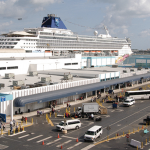Conoce estos tres factores adicionales que hacen que las propiedades en Florida mantengan e incrementen su valor gracias a la movilidad y conexión interna e internacional en Miami.
Transporte internacional. Mientras PortMiami ha tenido mejoras notables que ha ayudado a expandir su alcance, la dinámica del tráfico aéreo en Miami es incomparable. Con 154 vuelos directos a grandes ciudades del mundo, el Miami International Airport es el mayor terminal de carga y el segundo de negocios en los Estados Unidos con lo que consolida su fama como una de las más importantes metrópolis del mundo.
Transporte público interno. El sistema gratuito de trolley, el Metromover y la expansión del sistema South Florida Tri-Rail para llegar a la Central Station de Miami capaz de conectar el centro de la ciudad con West Palm Beach, aseguran una cobertura inédita y la posibilidad de alternativas al tráfico vehicular que debería reflejarse en menos horas de congestión.
Servicios alternativos de transporte. Comenzando por los vistosos y convenientes taxis acuáticos en el centro de la ciudad, Miami ha mostrado una apertura a soluciones alternativas de transporte como lo son Uber, Lyft y los trenes rápidos Brightline que conectan Miami, Fort Lauderdale, Palm Beach y en un futuro próximo, Orlando.
Estas son tres de las razones que te permiten entender que invertir en bienes raíces en Miami es una excelente alternativa de negocio.
Macroeconomía. La economía de Florida alcanzó los mil millones de dólares con lo que se convierte en la décimo séptima economía del mundo detrás de países como Argentina, Arabia Saudita, Holanda y Suiza, lo que muestra su fuerza actual y el potencial a futuro.
Hub corporativo. La reciente apertura de oficinas de gigantes tecnológicos como Facebook, Google, Expedia, Amazon y Emerge America, además de la fuerte presencia de start ups de tecnología en distritos como Wynwood, ha consolidado a Miami como una ciudad de negocios de clase mundial.
Centro financiero. Brickell en la actualidad es conocido como el Wall Street del Sur ya que concentra una gran cantidad de bancos e instituciones financieras internacionales.
By: Amber Gibson. Source: Forbes
Move over, South Beach. Miami’s downtown core is one of the fastest-growing destinations in the country. Florida’a population is growing at a rate of 900 people per day, second in the country only behind Texas. Within Florida, Brickell is the hotspot, with the most new construction condos, and nearly tripling its population between 2000 and 2016. The boom shows no signs of stopping.
According to the Miami Herald and Miami Downtown Development Authority’s 2018 report, downtown is now home to 92,000 people, and this is projected to grow to more than 109,000 residents by 2021.
Visitors are opting to stay here instead of the beach in greater numbers than ever too, thanks to hot new hotels like EAST, Miami, SLS Lux Brickell and W Miami. When the Mandarin Oriental, Miami opened in 2000, it was a pioneer on Brickell Key, the first luxury property in the neighborhood, but now its stately elegance is joined by chic vibes at EAST, Swire Hotels’ first North American property. Paperless check-in, international cuisine and modern art installations appeal to a new generation of connected Millennial business travelers.
What’s driving this growth? An explosion of new build condominiums, trendy new bars and restaurants, business opportunities and the nearly perfect weather make Brickell especially appealing to a cosmopolitan, international crowd. Many new residents are Central and South American along with people fleeing the cold weather and high taxes in the northeast.
By Ingo Winzer – Forbes
Much like California, Florida has often been the land of investor dreams – and investor heartache.
A potent mix of retirees, snowbirds, job seekers and foreign investors has swung home prices to ridiculous highs and stomach-churning lows more than once in the past. In just a few years before 2008, home prices in some Florida markets more than doubled—but after 2008 they fell 60%.
In the years that strong economic growth has returned to Florida, it’s not surprising that home prices have again climbed briskly in almost all local Florida markets. Does this mean that investors can just dive back into the warm Florida waters, certain of a good return on their efforts?
Complete Article
By: Amanda Rabines / The Real Deal
Residential construction in South Florida picked up in October, year-over-year, while commercial construction dropped off significantly, according to a new report by Dodge Data & Analytics.
Commercial construction starts decreased 34 percent last month to $453.7 million, while residential construction starts increased 3 percent to $686.2 million according to the report.
Due to the sharp decline in commercial construction, total building activity dropped 16 percent to about $1.14 billion in October, year-over-year.
Commercial construction includes office, retail, hotels, warehouses, manufacturing, educational, healthcare, religious, government, recreational, and other buildings, while residential includes single-family and multifamily housing, according to the report.
On a year-to-date basis, commercial starts fell 4 percent to $4.86 billion, while residential spiked 27 percent to $6.08 billion. In September, residential construction already outpaced last year’s total of $5 billion in residential spending.
Year-to-date, total building activity increased 11 percent to $10.9 billion.
Despite the increase in residential building (which includes multifamily), federal data suggests the apartment boom may be waning thanks to a consecutive monthly decline in building permits.



